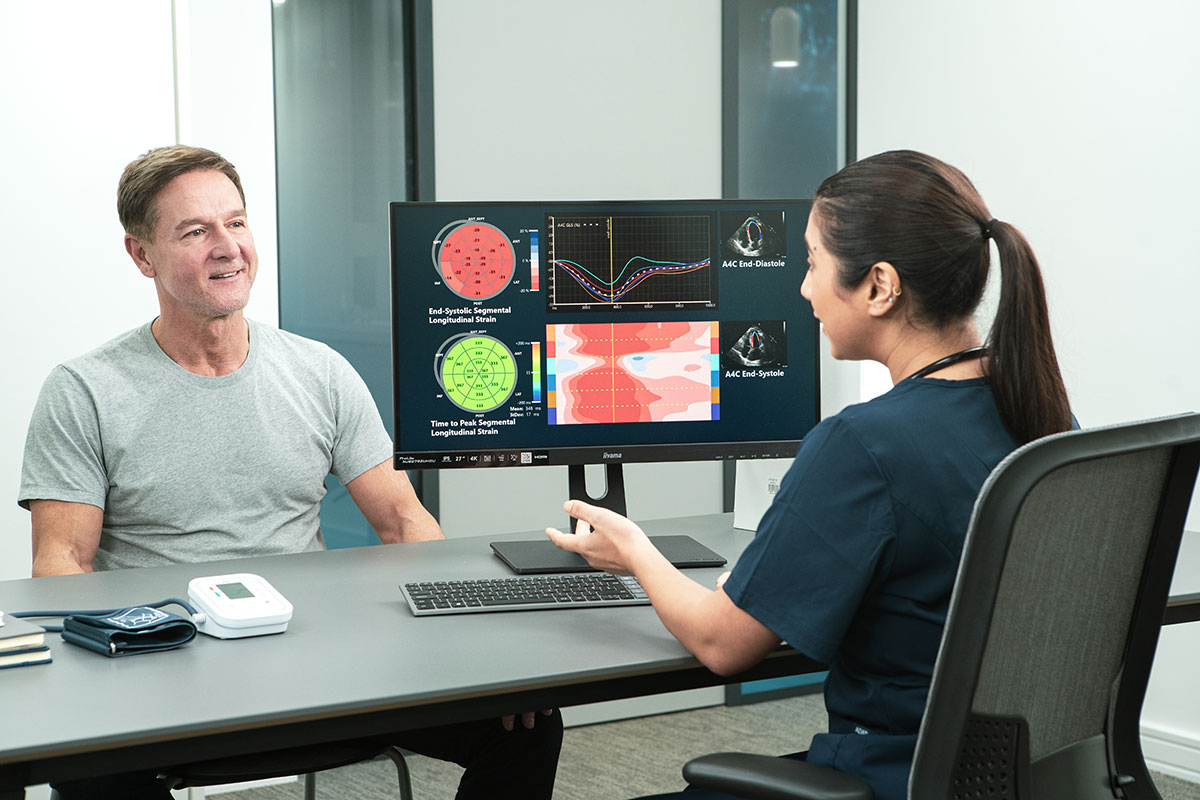This content is published as part of a paid advertising agreement.
The burden of heart failure (HF) on patients and clinicians, and the need to diagnose it more quickly and efficiently, is severe and constantly increasing. According to data from the Global Health Data Exchange registry, there were 64.3 million cases of heart failure in 20201. In the United Kingdom, heart failure affects about 900,000 people with 60,000 new cases annually2.
Those patients experience debilitating symptoms and frequent hospitalizations, meaning HF can significantly impair quality of life. It also imposes healthcare systems with a huge economic burden. In 2014, it was reported that heart failure was responsible for global annual health expenditure of $108 billion per annum3.
Meanwhile, cardiologists, imaging technicians and clinicians face rising workload already under pressure. A 2020 survey by the American College of Cardiology found that 35 percent of cardiologists described themselves as “burned out”4. But there is a way of significantly improving outcomes for both patients and practitioners alike.
In echocardiography - the most popular modality used to diagnose heart failure - artificial intelligence (AI) can analyze global longitudinal strain (GLS) which is proven to be a better and earlier indicator of heart failure as it picks up preserved ejection fraction (HFpEF)5. In the 2021 ESC guidelines for ‘diagnosis and treatment of acute and chronic heart failure’, GLS was recommended for assessment and management of heart failure5.
Used in tandem with ejection fraction (EF) analysis, AI-powered GLS analysis increases diagnostic speed and quality. This AI analysis, as carried out by Ultromics’ fully managed echocardiography service EchoGo, uses AI that is proven to accurate and precise, and has been proven in studies to be a meaningful predictor of outcomes when manual analysis was not.

The case for using Global Longitudinal Strain (GLS) analysis
GLS analysis is not as widely used or accepted as EF, not least because some see strain analysis as too expensive and time-consuming. However, the European Society of Cardiologists (ESC) recommends the use of global longitudinal strain as a predictor of heart failure, noting that strain can detect patients with preserved ejection fraction6. Of all heart failure patients hospitalized, 65% of patients have HFpEF and so it’s important to use GLS.
The role of GLS in predicting heart failure severity was highlighted in a study of almost 2,200 patients, published in February 20217. The observational, prospective cohort study looked at the GLS of 2,186 people with stages A-to-D heart failure according to the American Heart Association (AHA) criteria. The team found that GLS was not only associated with HF severity, but during a median follow-up period of just over three years, was predictive of all-cause mortality and cardiac death. It confirmed the conclusion of a 2019 review of the evidence, which found GLS had “greater prognostic value” than Left Ventricular Strain (LVEF). “GLS adds incremental value to EF in the prediction of adverse outcomes.”8
A 2020 peer-viewed study in JASE with MedStar University of Chicago, the American Society of Echocardiography (ASE) and Ultromics, found that measuring GLS and using Ultromics’ echo reporting service – EchoGo - significantly improved the ability to accurately predict a patient’s known outcome. The study assessed 870 hospitalized patients, evaluating cardiac function and providing risk stratification for heart failure and outcomes. The results showed there was no associations between left ventricular ejection fraction and mortality, but there was an association with left ventricular longitudinal strain and right ventricle free wall strain and mortality. Furthermore using Ultromics, not manual, was a significant predictor of in-hospital and follow-up mortality9.
As well as being a more significant indicator of heart failure, Ultromics’ reporting service can also solve inconsistency in echocardiography analysis caused by operator variability, since it’s unique concept of sending reports as part of a service eliminates the need for any manual interaction. Currently, software for interpreting echocardiographic scans is only semi-automated and requires partial manual tracing of endocardial borders which is operator dependent and creates high levels of inter- and intra-operator variability.
GLS analysis with Ultromics’ fully managed echocardiography service
EchoGo from Ultromics offers a fully managed service that automates and administers echocardiography reporting, allowing healthcare professionals to focus on patient care. As part of the service, it provides over 230 measurements - including strain, left ventricular volumes and ejection fraction - for consistent, timely heart disease detection and prediction.
Using an echo reporting service means the same quality of care can come from all levels of clinician, including trainees. Zero variability is guaranteed because EchoGo is a Software-as-a-service (SaaS); reports are sent without ‘hands-on software’ time, eliminating any subjectivity. The service, which is provided in an eight-page report, has been validated to be accurate, and on average it can save 25 percent of the total exam time. And because EchoGo operates in the cloud – there is no software to install or upgrade, and there isn’t any additional cost or specialist training required.
GLS via Ultromics’ full managed echo reporting serviced can improve the quality of heart failure diagnosis, saving time for clinicians while increasing accuracy of results and satisfaction for patients, who get the same level of care no matter who they see. It can also lower costs too, by reducing times and instances of readmission.
This advantage is not a future tool; it is available now, simply and cost-effectively implemented as a vendor-neutral solution into any cardiology set-up, in the form of EchoGo. Learn more - https://www.ultromics.com/
References:
- https://amj.amegroups.com/article/view/5475/html
- https://www.england.nhs.uk/improvement-hub/wp-content/uploads/sites/44/2017/11/heart-failure.pdf
- https://pubmed.ncbi.nlm.nih.gov/24398230/
- https://www.acc.org/latest-in-cardiology/articles/2020/03/24/16/41/sat-10am-acc-2019-well-being-study-acc-2020
https://www.escardio.org/Guidelines/Clinical-Practice-Guidelines/Acute-and-Chronic-Heart-Failure
- https://academic.oup.com/eurheartj/article/37/27/2129/1748921
- https://www.escardio.org/Guidelines/Clinical-Practice-Guidelines/Acute-and-Chronic-Heart-Failure
- https://www.sciencedirect.com/science/article/pii/S2352906718301398?via%3Dihub
- https://www.ultromics.com/literature/fully-automated-quantification-of-contrast-and-non-contrast-echocardiograms-eliminates-inter-operator-variability
- https://www.onlinejase.com/article/S0894-7317(21)00483-1/fulltext
This content is published as part of a paid advertising agreement.